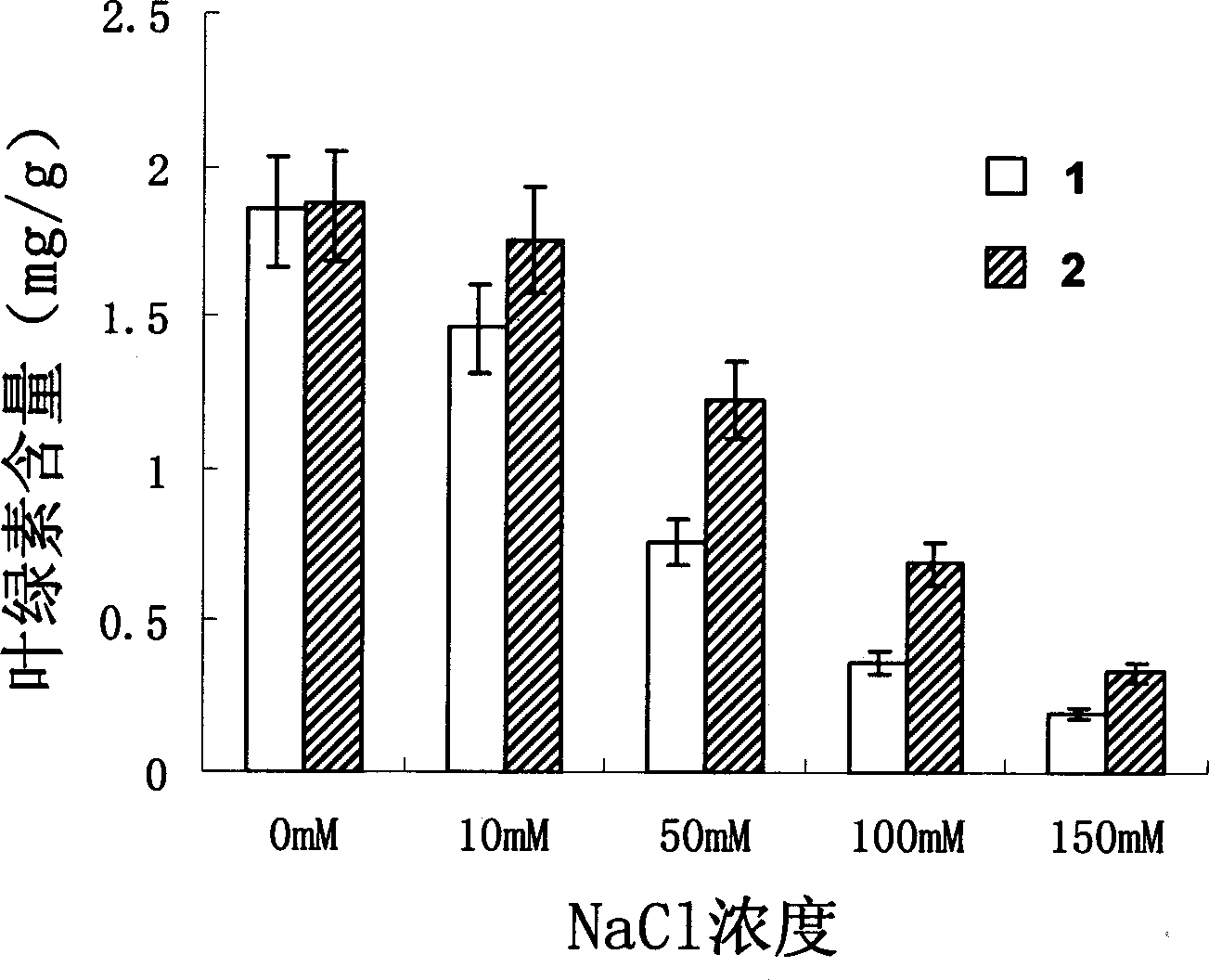Cotton GhZFP1 gene sequence, its clone and use
A gene and cotton technology, applied in the fields of application, genetic engineering, plant genetic improvement, etc., can solve problems such as ineffective effects
- Summary
- Abstract
- Description
- Claims
- Application Information
AI Technical Summary
Problems solved by technology
Method used
Image
Examples
Embodiment 1
[0064] Embodiment 1: the isolation method of cotton GhZFP1 gene
[0065] 1. From 0.3mol· -1 Total RNA was extracted from NaCl-treated cotton leaves, mRNA was isolated, and a cDNA library of cotton under salt stress was constructed.
[0066] 2. Perform differential screening to screen out a large number of positive clones.
[0067] 3. Transform the positive clones into the plasmid pTripLEx2, extract the plasmids for enzyme digestion identification, and pick relatively large positive clones for sequencing.
[0068] 4. Sequence determination: This work was carried out at Shanghai Boya Bioengineering Technology Service Co., Ltd.
[0069] 5. Homology search: use BLAST software to compare the isolated sequence with the sequence in the gene bank.
Embodiment 2
[0070] Embodiment 2: Cotton gene GhZFP1, following sequence:
[0071] (1) Information on SEQ ID NO 1
[0072] (d) Sequential features
[0073] * Length: 1377 bp
[0074] *Type: nucleic acid
[0075] * Chain type: double chain
[0076] *Topology: Linear
[0077] (e) Molecular type: cDNA
[0078] (f) Assumption: No
[0079] (g) Antisense: No
[0080] (h) Original source: Cotton
[0081] (i) Sequence description: SEQ ID NO.1
[0082] 1 acggccgggg gtccccttat cactcagcac tttatcttc tctctccatt aatcttcatt
[0083] 61 gaaagaaaat catctttgct ttcacccatg accactgttt atgacccttc aacaccatctc
[0084] 121 acctccaaaa aattgtgttt caaggacctt gaaatccctc caaggaaaaa gcaactccat
[0085] 181 tgttgccaca acgccgccgc catggaactt ccccaccacg aagctaggct ccacaaatac
[0086] 241 cttccttcca atgaagacga tgacggcacc gatgatccat acggcaccga ccatttccgc
[0087] 301 atgtacgagt tcaaggtaag aaggtgtaca aggagccgta gccatgactg gactgactgt
[0088] 361 ccttttgctc atccaggtga aaaagcccga cgt...
Embodiment 3
[0119] Embodiment 3: Construction of expression vector
[0120] 1. According to the nucleotide sequence of the isolated cotton gene GhZFP1, design primers:
[0121] Forward primer: 5-AtgACCACTgTTTATgACCCTTCAC-3
[0122] Reverse primer: 5-TCTTCTTCCTCTACATCAAgAgC-3
[0123] Using the cotton cDNA containing the gene as a template, polymerase chain reaction was carried out.
[0124] 2. Take 2 μl of PCR and connect it with the pMD18-T vector, and the operation steps are carried out according to the instructions of the product pMD18-TVector system of Promega Company. Then transform E. coli DH5α strain and grow overnight on LB plates coated with 5-bromo-4-chloro-3-indole-β-D-galactoside and X-gal containing ampicillin (100 μg / ml) . Pick white colonies and culture them overnight in LB liquid medium. Plasmid DNA was extracted by alkaline method and sequenced.
[0125] 3. The gene was excised from the pMD18-T vector with two restriction enzymes XbaI and SalI, and connected with PB...
PUM
 Login to View More
Login to View More Abstract
Description
Claims
Application Information
 Login to View More
Login to View More - R&D
- Intellectual Property
- Life Sciences
- Materials
- Tech Scout
- Unparalleled Data Quality
- Higher Quality Content
- 60% Fewer Hallucinations
Browse by: Latest US Patents, China's latest patents, Technical Efficacy Thesaurus, Application Domain, Technology Topic, Popular Technical Reports.
© 2025 PatSnap. All rights reserved.Legal|Privacy policy|Modern Slavery Act Transparency Statement|Sitemap|About US| Contact US: help@patsnap.com



